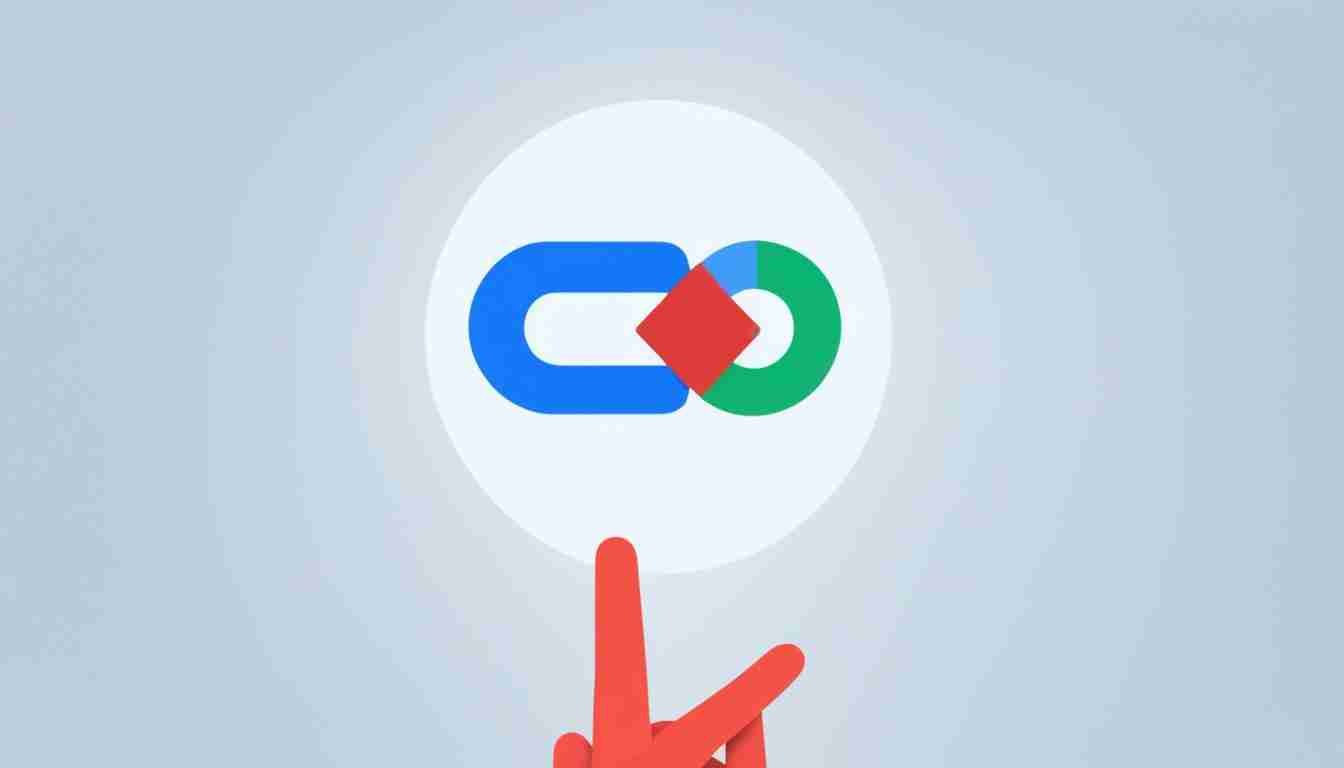If your website doesn’t load quickly, you risk losing potential visitors and customers. Slow load times can also negatively impact your search engine ranking, leading to reduced visibility and traffic. To improve your website’s performance, it’s crucial to optimize your page speed.
In this section, we will explore why boosting your page speed is essential and provide you with seven crucial strategies to enhance it. Whether you’re a seasoned website owner or a beginner, these tips will help you speed up your web pages, improve user experience, and climb the search rankings.
Key Takeaways:
- Page speed is crucial for website performance and search engine ranking.
- Optimizing images and reducing file sizes are effective ways to improve page speed.
- Browser caching and enabling compression can help speed up your website and reduce load time.
- Minimizing redirects and render-blocking resources can enhance your web pages’ loading time.
- Optimizing CSS and JavaScript files can significantly improve website speed.
Understanding the Impact of Page Speed on Rankings and User Experience
Page speed is a crucial factor in improving your website’s search engine rankings and user experience. Faster loading times not only increase user engagement but also reduce bounce rates, resulting in enhanced user satisfaction. Search engines also favor fast-loading sites, making it an essential element of search engine optimization (SEO).
Website speed affects various user behavior metrics, making it a critical component of user experience optimization. A slow site can lead to visitor frustration, reducing the likelihood of a return visit and hindering conversion rates. The impact of page speed on user experience cannot be understated; a one-second delay in page load times can result in a 7% decrease in conversion rates.
Image loading times are one of the leading causes of slow page speeds. Optimization techniques such as compressing images and reducing file sizes can significantly improve your website’s load times. Additionally, minimizing HTTP requests and reducing server response time can also improve page speed.
| Improved Page Speed Can Lead To: |
Increased Loading Time Can Cause: |
- Better search engine rankings
- Higher user engagement
- Improved conversion rates
- Enhanced user experience
|
- Higher bounce rates
- Decreased conversion rates
- Poor user experience
|
Investing time and effort into enhancing your website’s speed will undoubtedly pay off in the long run. By implementing optimization techniques like those discussed in this article, you can enhance your website’s ranking, user experience and achieve your business goals.
Optimize Images and Minimize File Sizes
If you want to Boost Page Speed and improve website performance, optimizing images is a crucial step. High-resolution images can slow down your website and increase loading time, leading users to leave your page before it finishes loading. To enhance site speed, you need to optimize your images and minimize file sizes, without compromising their quality.
To start with, select the appropriate image format, such as JPEG, PNG, or GIF, based on the type of image and its purpose. For instance, PNG images are suitable for logos and graphics that require transparency, while JPEG images are ideal for photographs.
Next, reduce the file size of your images without losing quality. One way to achieve this is by using compression techniques. For example, you can use online image compression tools like TinyPNG or Compressor.io, or image optimization plugins such as WP Smush.
Another effective way to minimize file sizes is by using responsive images. This technique involves serving different image sizes for different screen resolutions. For instance, you can use 400px width images for mobile devices and 1200px width images for desktop devices. This way, you can enhance website speed while providing an optimal user experience on different devices and screen sizes.
The Importance of Alt Tags
Alt tags are essential elements for SEO, as they help search engines to understand the context of your images. They also improve web accessibility by providing descriptions of your images to users with visual impairments.
When creating Alt tags, use descriptive keywords related to the image and the content on the page. Avoid using generic terms such as “image” or “picture.” Instead, be specific and clear to ensure that both search engines and users can understand the relevance of your images.
Utilize Browser Caching and Enable Compression
One of the most effective ways to improve website speed is to utilize browser caching and enable compression. When users visit your site, their browser stores a copy of your website’s resources, including images, stylesheets, and JavaScript files. This helps your site load faster for returning visitors since the browser doesn’t have to re-download the same files every time they visit.
To enable browser caching, set cache expiration headers on your website’s resources. These headers tell the browser how long it should keep a copy of each file. By setting a longer expiration time, you can encourage the browser to cache more files, improving your site’s load time.
Another effective way to reduce file sizes and improve website speed is to enable compression. Compression reduces the size of your website’s resources, making them quicker to download. Gzip compression is one of the most common techniques used to compress files on websites. It can reduce the size of your website’s resources by up to 70%.
To enable compression, update your website’s server settings or use a compression plugin like Gzip for WordPress sites.

Tip: If you’re using a content delivery network (CDN) for your website, make sure it’s set up to cache your resources as well. This will further improve your website’s load time.
Minimize Redirects and Eliminate Render-Blocking Resources
In order to boost page speed and improve website performance, it is critical to minimize redirects and eliminate render-blocking resources. Redirects are additional round trips that your web pages have to make, resulting in slower loading speeds. Meanwhile, render-blocking resources prevent web pages from loading until all the resources are fully rendered. This can cause significant delays in page loading times.
Minimizing redirects can be done in several different ways. One option is to avoid using more than one redirect per page. Redirect chains can significantly slow down your website’s page speed and negatively impact user experience. Additionally, reducing the number of HTTP requests can also help. This can be achieved by consolidating or eliminating image files, scripts, and stylesheets that aren’t necessary for the page.
Eliminating render-blocking resources can be done through several methods. One of the most effective ways is to use async or defer tags for scripts and optimize CSS delivery to prevent large CSS resources from blocking the rendering of a web page.
By minimizing redirects and eliminating render-blocking resources, you can speed up web pages, reduce website load time, and enhance website speed. This will lead to a more seamless user experience, helping you achieve better rankings and greater user satisfaction.
Optimize CSS and JavaScript Files
Optimizing your CSS and JavaScript files can significantly enhance your website’s page speed. By reducing the file sizes of these files and improving their loading time, you can improve user experience and boost your search engine rankings. In this section, we will discuss three essential techniques for optimizing your CSS and JavaScript files.
Minification
Minification is the process of removing unnecessary characters, such as spaces, line breaks, and comments, from your CSS and JavaScript files. This technique reduces file size, resulting in faster loading times and improved website performance. Many online tools, such as YUI Compressor and UglifyJS, can help you minify your files automatically.
Combining Files
Combining your CSS and JS files into a single file can improve website speed by reducing HTTP requests. Browsers can only make a limited number of requests simultaneously, so sending multiple requests to load different CSS and JS files can significantly slow down your website. By merging them, you can reduce the number of requests and improve website performance. However, be careful when combining CSS files, as the order of the files can affect the styling of your website.
Asynchronous Loading
Asynchronous loading allows your website to load CSS and JS files in the background while the rest of the page loads. This technique can significantly improve website speed by preventing scripts from blocking the rendering of your website. You can use the async and defer attributes to load your files asynchronously, but keep in mind that not all browsers support these attributes.
By applying these three techniques, you can effectively optimize your CSS and JavaScript files, reduce file sizes, and improve website performance, leading to faster loading times and better search engine rankings.
Prioritize Mobile Optimization and Accelerated Mobile Pages (AMP)
Mobile optimization is a critical aspect of boosting your website’s page speed and improving user experience. With more and more people using mobile devices to browse the internet, it’s essential to prioritize mobile optimization to stay ahead of the competition and deliver a seamless experience to your users.
One effective way to enhance mobile optimization is through the implementation of Accelerated Mobile Pages (AMP). AMP is an open-source framework designed to accelerate the loading speed of mobile web pages. It achieves this by simplifying the HTML, CSS, and JavaScript code, prioritizing the critical content and resources, and preloading resources for faster delivery.
Implementing AMP on your website not only speeds up your page loading time on mobile devices but also provides a smoother and more engaging user experience. It enhances your website’s visibility on Google’s search engine results pages, as Google prioritizes AMP pages in its mobile search results. Therefore, implementing AMP can significantly improve your search ranking, boost page speed, and reduce website load time, enhancing your website speed and user experience.
By prioritizing mobile optimization and implementing AMP, you can ensure your website delivers a fast-loading, user-friendly experience to your mobile users, leading to increased engagement, satisfaction, and ultimately, better conversion rates.
Conclusion
Optimizing your website’s page speed is crucial for improving your search rankings and user experience. By implementing the strategies discussed in this article, you can successfully boost your page speed and enhance your website’s performance.
Remember, faster loading pages increase user satisfaction, reduce bounce rates, and improve conversions. It is important to make page speed a priority when optimizing your website for search engines and your users.
Utilize the tips mentioned in this article, such as optimizing images, enabling compression, minimizing redirects, and prioritizing mobile optimization. These strategies can reduce website load time, speed up web pages, and enhance site speed, leading to better search visibility and a more satisfactory user experience on your website.
Start implementing these strategies today to improve your website’s page speed and enhance your user’s experience.
FAQ
Why is page speed important for my website?
Page speed is crucial for your website’s ranking and user experience. A fast-loading website not only improves your search engine rankings but also enhances user satisfaction, reduces bounce rates, and increases conversions.
How does page speed impact search engine rankings?
Search engines consider page speed as one of the ranking factors. Websites with faster loading times tend to rank higher in search results, as search engines prioritize delivering the best user experience to their users.
What are the benefits of improving page speed for user experience?
Improving page speed enhances user experience by providing faster access to your website’s content. Users are more likely to engage with a website that loads quickly, leading to reduced bounce rates and increased time spent on your site.
How can I optimize images to improve page speed?
To optimize images, you can reduce their file sizes by compressing them, choosing appropriate image formats (e.g., JPEG, PNG), and optimizing their dimensions. This ensures that images load quickly without compromising their quality.
What is browser caching, and how does it boost page speed?
Browser caching allows the storage of previously loaded resources, such as images and CSS files, on a user’s device. When a user revisits your site, these resources are fetched locally, reducing the time it takes to load the page.
How does enabling compression enhance website speed?
Enabling compressions, such as GZIP, reduces the size of HTML, CSS, and JavaScript files. Smaller file sizes result in faster file transfer, decreasing the time it takes for a webpage to load.
How can I minimize redirects on my website?
Minimizing redirects involves simplifying your website’s URL structure, reducing unnecessary redirects, and utilizing HTTP redirects (301 and 302) correctly. This helps speed up the loading process and prevents multiple redirects that can negatively impact page speed.
What are render-blocking resources? How can I eliminate them?
Render-blocking resources are files, such as CSS and JavaScript, that prevent a page from rendering until they are fully loaded. To eliminate them, you can optimize CSS and JavaScript by minimizing their code, deferring their loading, or using async or defer attributes.
How can I optimize CSS and JavaScript files for better page speed?
You can optimize CSS and JavaScript files by minifying them, removing unnecessary comments and whitespace, and combining multiple files into one. Additionally, consider loading CSS files in the head section and JavaScript files near the closing body tag for faster page rendering.
Why is mobile optimization important for page speed and user experience?
Mobile optimization is crucial because more and more users access the internet through mobile devices. Optimizing your website for mobile devices ensures faster loading times, better usability, and improved user satisfaction.
What are Accelerated Mobile Pages (AMP), and how do they impact page speed?
Accelerated Mobile Pages (AMP) is an open-source framework that aims to optimize web pages for near-instantaneous loading on mobile devices. Implementing AMP can significantly improve page speed on mobile, leading to better user experience and increased search visibility.




